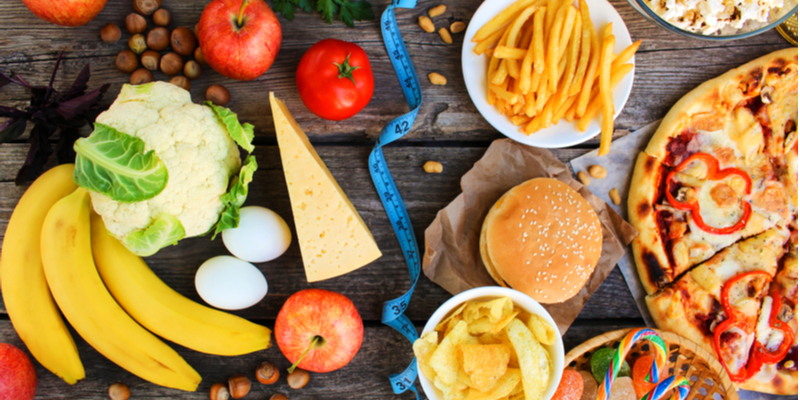7 foods that help build a healthy gut microbiome
Soluble and insoluble fibre, resistant starches, prebiotics, probiotics, and polyphenols can help build a healthy and diverse gut microbiome.
The balance between the beneficial and the pathogenic bacteria is required to maintain homeostasis and for several functions to occur. The majority of bacteria are in the colon. This balance prevents them from becoming pathogenic. They stimulate the growth of the intestine lining and therefore protect the immune system. They form a part of the intestine barrier and prevent intestinal permeability.
The current health epidemic and the rise of chronic health diseases can be tied back to the combined result of the rapid changes in our modern diet, cultural practices, increasing rates of caesarean section births, reduction in breast feeding, vaccinations and antibiotic excesses, decrease in plant food intake, carbohydrate heavy diets, and the increase in GMO foods. All these factors have created a recipe for microbiome disruption, dysbiosis, and the loss of ecological diversity.
Importance of gut microbiome
It is the bacteria in your gut microbiome that helps synthesise biotin, folate, and vitamin K. Without them, there is muscle activity in the intestine and this leads to constipation, the root of most health issues. They are also your perpetual antimicrobial. What happens with many of us is that this bacterial relationship can become pathogenic, where the harmful outweigh the beneficial. This causes damage to you. Several things are required to build a robust microbiome, one that is rich in beneficial bacteria as well as in the diversity and variety, so that it can be deeply protective.
You require soluble fibre, insoluble fibre, resistant starches, prebiotics, probiotics, and polyphenols. They are great microbiome building foods, and you’ll be surprised that I do not mention fermented kombucha at all!
1. Takra
Takra is the traditional fermented and spiced buttermilk in ayurveda. It has the taste of sour, sweet, and astringent. It is freshly made buttermilk which contains bacteria very similar to the human digestive tract. It is a food that enhanced digestion and absorption of all the food we eat. It also has a diuretic quality and reduces constipation. This prevents water retention and accumulation of metabolic toxins. It promotes our overall immunity by replenishing the beneficial bacteria of the gut microbiome. A small serving at room temperature is best. Making takra from commercial yoghurt has no benefits and can be congestive.
2. Banana
Raw bananas are a kind of resistant starch. This kind of starch resists digestion, travelling through your gastrointestinal tract without breaking down as energy. Once resistant starch reaches your colon, it is ready to do the job of feeding the beneficial bacteria. It does not cause a spike and crash in blood sugar while it makes its way through the digestive system. In fact, it helps repair the colon tissue.
The benefits of consuming resistant starch include building a robust microbiome, reducing gut inflammation, lowering the colon pH to support recovery from conditions like Colitis, increasing the absorption of minerals, electrolytes and water, and better blood sugar control.
3. Pomegranate
Pomegranate is a polyphenol. This is a type of phytonutrient that is found in plants. The immune system loves rich color from polyphenols. These are potent antioxidants. In the colon, polyphenols in pomegranate get broken down by gut bacteria. The metabolites increase beneficial bacteria and decrease pathogenic bacteria. The bacteria themselves break down the polyphenols in pomegranate into a more bioavailable form to feed themselves.

4. Oats
Prebiotics are food that feed the beneficial bacteria of the gut microbiome. They carry special compounds that help stimulate the growth of these beneficial bacteria. Oats contains beta glucans which get converted to short chain fatty acids that feed beneficial bacteria. It stimulates effects on lactobacillus, enterococcus and Bifidobacterium which are beneficial bacteria in the gut microbiome. Their clinical benefits can include the reduction in LDL levels, lowering of postprandial blood glucose levels and improvement in wound healing.
5. Dal
All legumes are great foods for the gut microbiome. They are insoluble fibre which play a key role in feeding beneficial bacteria. Combining good old lentils with whole grains like unpolished rice or whole barley and adding ghee is the simplest way to feed a healthy microbiome. It goes back to telling us that feeding the microbiome need not be about fancy bottled fermented drinks. Fibre is what feeds the beneficial bacteria. The more plant foods we include in the form of legumes, grains, and vegetables, the better will be our gut microbiome.
6. Apples
Apples contain pectin, which get released when they are cooked. Apples are prebiotic foods. It is a great winter fruit when cooked. They have a predominantly sweet and astringent taste. When they are uncooked, they have more astringency which increases vata dosha and weakens agni. Eating them raw is also colder which is associated to weakening the gut microbiome. However, when they are stewed with some ghee and spices, their astringency reduces. The pectin released is gut healing and a food for the gut microbiome. It helps to balance vata and strengthen agni.
Consider having them stewed as a light breakfast to build a great microbiome. However, remember to compensate at lunch with optimal protein and plenty of vegetables. This will allow you to get their benefit without upsetting your blood sugar.
7. Leafy greens
Leafy greens are excellent prebiotics. They do not require a great deal of cooking and can be sautéed in minutes. This allows them to retain their fibre and help feed the microbiome. They are bitter and astringent which make them cleansing foods. Their varieties are rich, with their colors ranging from lighter greens to rich dark ones. Lettuce do not come in this category. Iceberg versions are GMO, and have very little nutritive value, as they are predominantly water. Look for local versions with more fibre. They are more fibrous which stimulate the growth of beneficial bacteria in the gut.
While fermented foods are all the rage today for feeding the microbiome, they can be very tricky. Many of them are bottled. The temporary relief that you experience is when it neutralises the acidity presents with indigestion. It provides temporary relief but can raise pitta dosha and histamine in many. It is also easy to overconsume them when they appear to be beneficial.
Focusing on fresh whole foods with fibre of different kinds can be a safer approach to building a healthy and diverse gut microbiome.
Edited by Megha Reddy
(Disclaimer: The views and opinions expressed in this article are those of the author and do not necessarily reflect the views of YourStory.)






